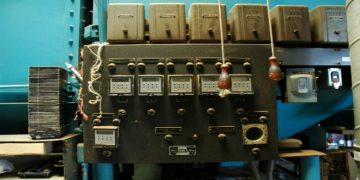Retirement planning is a crucial aspect for small business owners, who often face unique challenges and opportunities compared to traditional employees. Unlike large corporations, small businesses may not have access to extensive retirement benefits, making it essential for owners to proactively establish retirement plans. Are you too thinking about getting started with investing for your retirement? Register for free at https://kwantixai.org to learn about investing and make solid investment decisions.
Traditional 401(k) Plans
Traditional 401(k) plans are popular due to their tax-deferred growth and potential for employer-matching contributions. In 2024, employees can contribute up to $23,000, with an additional $7,500 allowed for those aged 50 and above. Employers can also contribute, providing further tax advantages. Setting up a traditional 401(k) requires compliance with various regulatory requirements and can involve complex administration. However, it remains an excellent option for businesses of all sizes, offering flexibility in contribution levels and vesting schedules.
SIMPLE IRA and SIMPLE 401(k)
SIMPLE IRAs and SIMPLE 401(k) plans are designed for businesses with fewer than 100 employees. These plans are easier to set up and administer compared to traditional 401(k)s. The main difference between the two lies in the ability to take loans against accounts in SIMPLE 401(k)s. In 2024, the contribution limit for SIMPLE IRAs is $16,000, with catch-up contributions allowed for those over 50. Employers are required to make either matching contributions or non-elective contributions, ensuring that employees receive meaningful retirement benefits. These plans are cost-effective and provide straightforward options for small businesses to offer retirement benefits.
SEP IRA: Simplified Employee Pension
SEP IRAs are another flexible and cost-effective option, particularly suitable for small businesses with few or no employees. They allow for high contribution limits, up to 25% of each employee’s compensation or $69,000, whichever is lower. SEP IRAs are easy to set up and maintain, with contributions being tax-deductible for the business. The flexibility of not requiring annual contributions makes SEP IRAs attractive, especially for businesses with variable income. However, employers must contribute the same percentage of salary for all eligible employees, which may not be ideal for businesses with multiple employees.
Solo 401(k): Tailored for the Self-Employed
Solo 401(k) plans are designed for self-employed individuals and small business owners with no employees, other than a spouse. They allow the owner to contribute both as an employer and an employee, significantly boosting the total contribution limit. For 2024, the employee deferral limit is $23,000, with additional employer contributions up to 25% of compensation, capped at $69,000. This plan offers the same benefits as a traditional 401(k), including tax-deferred growth and the option for Roth contributions. The ability to take loans from the plan also provides financial flexibility.
Defined Benefit Plans: Guaranteed Retirement Income
Defined benefit plans promise a specified retirement benefit, typically calculated based on salary and years of service. These plans can offer significant retirement benefits, making them ideal for high-income professionals who can manage higher administrative costs. Defined benefit plans are less common today due to their complexity and the financial commitment required from the employer. However, they offer substantial tax deductions and a predictable retirement income, which can be appealing for business owners seeking stability in retirement.
Tax Advantages and Incentives
Small business owners can benefit from various tax incentives when offering retirement plans. The Retirement Plans Startup Costs Tax Credit, for instance, provides up to $5,000 for the first three years to offset the costs of setting up a retirement plan. Employer contributions to retirement plans are generally tax-deductible, reducing the business’s taxable income. The SECURE 2.0 Act also introduces higher catch-up contribution limits and other enhancements to retirement savings options, making it easier for business owners to save for retirement.
Choosing the Right Plan: Factors to Consider
Selecting the appropriate retirement plan depends on several factors, including the business’s size, profitability, and the owner’s retirement goals. Administrative complexity and costs are also crucial considerations, as some plans require more maintenance than others. Additionally, understanding the needs and preferences of employees can help in choosing a plan that enhances employee satisfaction and retention. A well-chosen retirement plan can not only secure the owner’s financial future but also contribute to the overall success of the business.
Conclusion: Building a Secure Retirement Future
Establishing a retirement plan is a critical step for small business owners, providing financial security and peace of mind. It’s essential to start planning early and adapt as the business evolves. Consulting with financial advisors can help navigate the complexities of different retirement plans and ensure that the chosen option aligns with both business and personal financial goals. By offering a robust retirement plan, small business owners can create a supportive work environment, attract and retain talent, and secure their financial future.
David Prior
David Prior is the editor of Today News, responsible for the overall editorial strategy. He is an NCTJ-qualified journalist with over 20 years’ experience, and is also editor of the award-winning hyperlocal news title Altrincham Today. His LinkedIn profile is here.














































































